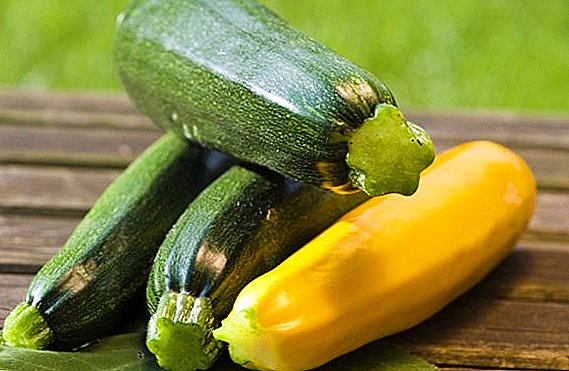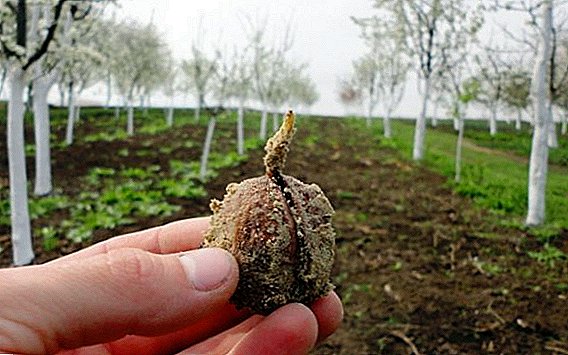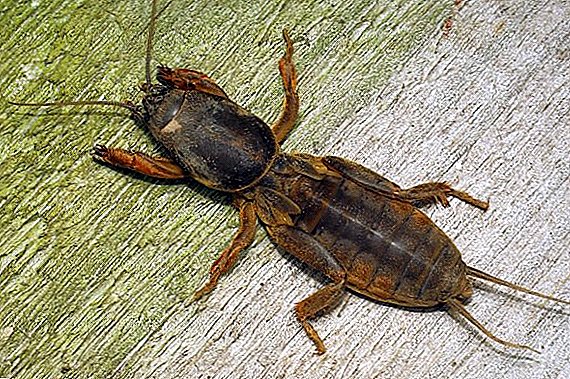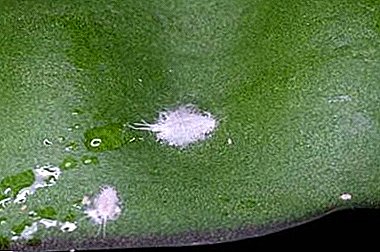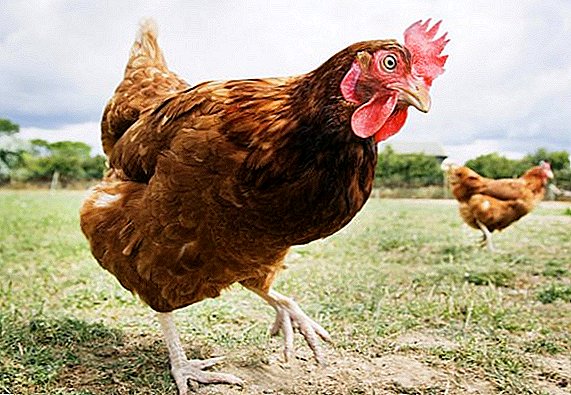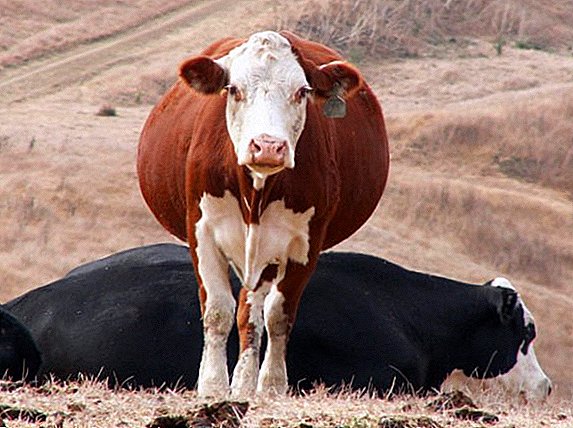 Each breeder with trepidation and excitement is waiting for the moment when the farm will replenish. Calving a cow is a crucial and important period, for which it is worth being prepared in advance. Awareness about the care, feeding and possible complications will help avoid a number of mistakes in the treatment of an animal and a new-born calf.
Each breeder with trepidation and excitement is waiting for the moment when the farm will replenish. Calving a cow is a crucial and important period, for which it is worth being prepared in advance. Awareness about the care, feeding and possible complications will help avoid a number of mistakes in the treatment of an animal and a new-born calf.
How many days does a cow walk to calving
It is very important to know how long a female pregnancy lasts. This will help to correctly calculate the beginning of the dry period and prepare the animal for the birth of a calf.
Fine
The duration of carrying a calf depends on the characteristics of the care for the heifers, as well as genetic predisposition. Cows, like people, on average, bear the fruit of 9 months. Many livestock breeders take for a period of 283-285 days.
Did you know? For the formation of 1 liter of milk through the udder should pass about 400 liters of blood. That is, to get 20 liters of daily milk through the udder of the whelp should be about 8000 liters of blood!
How much can go
The above term is very average, and childbirth can occur both earlier and later than the set date. For example, with improper care, improper diet calf may be born earlier for several days and even weeks (up to a month). Similarly, a cow can bear fruit. Given these factors, the cow's pregnancy can fit in the range of 240-311 days. 
Calendar of calving of cows by date of insemination: table
If the insemination was carried out artificially, then it will be quite simple to calculate the exact calving date, knowing the exact date of insemination. You can use the following formula: D = H + 10 / №-3.
Find out how many days the cow’s pregnancy lasts.
Explanation for this formula:
- D - estimated date of calving;
- H - date of insemination;
- № - month number of insemination.
For example, insemination was July 8 (July 8). The result is: 8 + 10 / 7-3 = 18/4, that is, supposedly calving will occur on April 18. If, by adding days, the figure is more than 30, it is necessary to subtract 30 from it, and add +1 to the month. For example, insemination occurred on January 29th.
The result is: 29 + 10-30 / 1-3 + 1 = 9/11, that is, calving will occur around November 9th. In order not to get confused with mathematical and calendar calculations, livestock breeders prefer to use a convenient table of cow's pregnancy: 
How to run a cow before calving
Running a cow means introducing it during the dry period - that is, stopping milking in order to strengthen and prepare the animal's body for calving and lactation. It is recommended to start the launch in 40-60 days on average, but for highly productive individuals and heifers that give birth for the first time, the launch can begin in 70 days.
To introduce a cow during the dry period, you need to follow these recommendations:
- gradually stop milking: first remove the milking milking, do not give out milk until the end, do not massage the udder to stimulate milk formation. After 5 days after stopping milking, the udder should “shrink” - decrease in volume;
- reduce the amount of succulent feed in the diet, as well as hay, water and liquor;
- when running in the summer, it is necessary to reduce the grazing of a cow to pasture to 4 hours, and in some cases stop altogether.
Important! Highly productive animals may take up to 2-3 weeks to stop milk production. But if the animal does not start up even after this period, a forced launch is carried out using special preparations.If the productivity of the animal before starting is within 3-5 liters, it is possible to stop milking according to this scheme for 7 days:
- 1 day - milking 2 times a day;
- 2 day - morning milking;
- 3 day - morning milking;
- 4 day - evening milking;
- 5 day - evening milking;
- 6 day - morning milking;
- 7 day - evening milking.

Signs (precursors) of the birth of a cow
The first changes in the appearance and behavior of the heifer can be seen 2 weeks before the birth:
- lowered and sagging belly;
- lowered sacrum;
- relaxed muscles and ligaments at the base of the tail;
- swelling and redness of the external genitalia;
- before the shrunken udder swells and is filled with colostrum;
- genital secretions have a slimy consistency;
- the genital slit is revealed.
Immediately before childbirth, the behavior of heifers can change: it becomes a bit restless, it can constantly rise and lie down, shift from one foot to the other, it can moo, look around or avoid people when approaching.
We advise you to get acquainted with the top 10 interesting facts about cows.If the animal is grazing with the main herd, it may try to retire, fight off the rest of the cows, go to a secluded place in the underbrush. On the day of calving, you can see that the pelvic bones of the animal begin to diverge, freeing up space for the baby to exit. If the distance between the bones is larger than the palm of your hand, it is necessary to prepare for the imminent acceptance of labor from a cow.
Video: precursors of the birth of a cow
How to take birth at the cow
For the birth of a calf, you need to prepare both the room and the cow itself:
- Netel should be placed separately from other cows, in a clean, previously disinfected, dry and warm room.
- On a fresh, layered bedding, you need to put a fresh layer of straw or a thick, clean cloth.
- Genitals, the hind legs of the animal should be washed with a solution of potassium permanganate or creolin 2%.
At this simple preparation ends. Further, the cows are trying harder, in the normal course of childbirth, the calf is born in half an hour - an hour. In this case, the cow can stand or sit on its side.
The calf comes forward with a muzzle, folded on the forelimbs, or hind legs - both positions are correct. At first, from the genital organs, the fetal bladder is gray or yellowish. The calf can tear it apart, otherwise it can be done only after the appearance of the limbs.
Did you know? It is estimated that heifers are born before bulls for 1-2 days.
Once the calf is completely out of the cow, it is necessary to wipe its muzzle, eyes, nasal passages and oral cavity from mucus with a clean cloth. After cessation of blood circulation in the umbilical cord, it is cut at a distance of 10-12 cm to the abdomen, the wound is treated with an antiseptic.  The cow also needs to wipe the genitals, udder, abdomen and legs with a clean cloth. Bloody and smeared tissue should be replaced.
The cow also needs to wipe the genitals, udder, abdomen and legs with a clean cloth. Bloody and smeared tissue should be replaced.
Care for a cow after calving
If you are giving birth to a cow for the first time, a number of questions may arise regarding the care of a female in the postpartum period. Food, the first milking and its mode, the use of milk - in all these points we will look further.
How to feed and what to drink
An hour after giving birth, the burenka needs to drink 10-15 liters of salted water (100 g per 10 liters). Water must be heated to 36 ° C. You can also give a little hay.
Further feeding should be organized according to the following scheme:
- 1st day The ration consists of 5 kg of hay or 8 kg of greens, as well as drunk bran (500 g per 10 liters of water);
- 2nd day The diet is the same, but the portion size increases slightly;
- 3-4 days. To the above diet is added 2-4 kg of root vegetables and a couple of kg of cereal mixtures;
- 5th day. The diet is the same, but the portions are increasing;
- 10th day. Serving size and diet as a whole is brought to normal.

When and how many times to milk a cow
Immediately after giving birth, the udder of the animal must be washed with a solution of potassium permanganate, then an hour and a half later the udder must be washed with a solution of soda (200 g per 10 l), wiped dry with a soft cloth and proceed to the first milking. The first jets need to be pounded and not used for feeding a calf.
In the first days after calving, milk cows need to be milked 4-5 times, or 3 times, but with poddozy 1-2 hours after the main milking. If the animal is prone to postpartum paresis, it is forbidden to fully finish it - it is necessary to leave part of the milk in the udder.
We recommend to read more about how and how many times to milk a cow.
Udder massage should always be carried out before milking. For this you need to thoroughly wash and wipe your hands, it is desirable that the palms were warm. Next you need a stroking, quite active, but neat (!) Movements to rub each part of the udder for 20-30 seconds. It is advisable to start such a simple massage a couple of months before calving.
When can I drink milk
Shortly before giving birth, during them or immediately after, a colostrum appears in the female cow — a yellow, viscous liquid with a specific smell and special composition.
Usually it is not used for food and is not used for cooking because of an unpleasant aroma, but for the calf colostrum is the most optimal and essential product that promotes the development of immunity, the formation of healthy intestinal microflora and normal digestive system, because the colostrum must be given an hour after the birth.  Cow's milk becomes suitable for human consumption after the colostrum ceases to be released - that is, after 7-10 days from the start of milking.
Cow's milk becomes suitable for human consumption after the colostrum ceases to be released - that is, after 7-10 days from the start of milking.
Important! Some females do not produce colostrum, in which case the calf must prepare special replacement mixtures based on fresh milk, fish oil, chicken eggs and salt.
Possible complications after calving
The above described birth course in a cow is optimal and physiological, but in some situations, due to too early insemination, improper drying, feeding and care errors, as well as many reasons, calving may not go according to the scenario. Weakness, edema, lack of afterbirth, exhaustion — such conditions are pathological and require immediate veterinary care.
The cow does not get up
The inability of the animal to stand on its feet after calving is explained by damage to the nerve endings of the buttock and lumbosacral regions. This can happen because of too narrow pelvic bones, during the first birth, with an excessively long and difficult birth. Both one limb and both can be affected.
In addition to these reasons, there are a number of pathologies in which the animal refuses to get up and lies constantly: metritis, mastitis, postpartum paresis, milk fever, severe phosphorus deficiency. A cow may also not stand up due to hip dislocation or bone fracture.  In any case, you must immediately show the animal to the veterinarian to establish the cause. The longer the animal will be in the supine position, the more unfavorable is the further prognosis for recovery, therefore it is necessary to force the animal to rise by any means.
In any case, you must immediately show the animal to the veterinarian to establish the cause. The longer the animal will be in the supine position, the more unfavorable is the further prognosis for recovery, therefore it is necessary to force the animal to rise by any means.
To do this, you can use sharp and loud sounds, hails, claps (this method works only with timid individuals), a slight twisting of the tail in the center, a special system of belts for lifting the animal. The longer a cow will be able to stand, move and turn, the better.
Read more about what to do if the cow does not get up after calving.After the rest, the ascents need to be repeated. If the nerves are damaged, the animal must be given medication with an anti-inflammatory effect, while paresis, caffeine benzoate is used, and phosphorus deficiency is eliminated by injection.
The cow has not cleared
Under normal conditions, the afterbirth should go out after 3-6 hours after calving. Many livestock breeders are beginning to panic, that the afterbirth did not come out, just without noticing how the cow woman swallowed it. To make sure that the animal is clean, you need to enter a well-washed and oiled hand into the vagina - almost closed cervix says that everything is in order.
But if the afterbirth did not come out or the uterus was not completely cleansed, the consequences can be very sad. With the remaining last, the animal continues to straighten up, the back is throbbing, mucous membranes with bloody clots can be seen from the genitals.  Manual cow cleansing Placenta residues begin to decompose very quickly inside the body, causing severe intoxication. At the same time, the animal refuses to eat, the amount of milk decreases, and the back is arched from pain.
Manual cow cleansing Placenta residues begin to decompose very quickly inside the body, causing severe intoxication. At the same time, the animal refuses to eat, the amount of milk decreases, and the back is arched from pain.
Important! Incomplete or untimely separation of the placenta is fraught with sterility of the female.
The causes of this pathological condition can be many:
- large fetal size;
- lack of vitamins and minerals;
- female obesity or exhaustion;
- insufficient activity, brucellosis, etc.
To help the animal get rid of the afterbirth, you need to use drugs that reduce the muscles of the uterus: "Oxytocin", "Oxylate", "Pituitrin". The vet may prescribe antibiotics to prevent infection. Amniotic fluid has a similar effect on the muscles of the uterus.  To do this, when the rupture of the fetal bladder, they must be collected in a clean container and stored at a temperature of +3 ° C. If after 6 hours the afterbirth does not come out, the amniotic fluid must be drunk 3 liters every 6-7 hours. By the way, whenever possible, the amniotic fluid should always be collected and discharged to the female, since they have a very beneficial effect on the body after calving.
To do this, when the rupture of the fetal bladder, they must be collected in a clean container and stored at a temperature of +3 ° C. If after 6 hours the afterbirth does not come out, the amniotic fluid must be drunk 3 liters every 6-7 hours. By the way, whenever possible, the amniotic fluid should always be collected and discharged to the female, since they have a very beneficial effect on the body after calving.
Udder edema in cows
Externally, the swollen udder looks enlarged in size, the nipples can also swell up (while shortening in length), the skin is cold and tense, and later the swelling can go to the belly. Inside the udder during edema, fluid accumulates in the tissues, putting pressure on the blood and lymphatic vessels. Because of this, the formation of milk is reduced. In many cases, the edema passes by itself without intervention.
But sometimes the udder swells long before calving for such reasons:
- lack of movement;
- inadequate diet during pregnancy;
- injuries, bumps and udder wounds;
- diseases of the kidneys, heart, toxicosis.
For the treatment of postpartum edema, a veterinarian consultation will be required. An udder massage is usually prescribed with an ointment (30 g of beeswax, 1 tablespoon of sunflower oil, melted in a water bath and cooled). The addition of salt to feed is also limited, the amount of succulent feed, water and liquor decreases. If the swelling does not pass, it is possible to use medications (Disalunin, Urodiacin). 
Cow vilifies
The cause of digestive upset after calving is usually nutritional errors. Poor quality food, an insufficient amount of useful elements and nutrients have a very negative effect on the digestion of the female, especially in such a vulnerable and sensitive period.
To remedy the situation, the cow can be drunk every 8-10 hours with a sweet mixture based on honey or sugar (1 tablespoon per liter of warm water). If diarrhea does not stop after two days, it is necessary to call the veterinarian, to analyze the feces for microorganisms.
It will be interesting for you to read about what excretions a cow has before and after calving.
No milk
The absence or only a small amount of milk is especially often observed in first-time cows. To avoid this problem, it is necessary to start up the cow in time, properly care for the animals during the dry period, after calving correctly. It is also very important to follow the milking technique, otherwise with abrupt, painful movements the cow will simply not give away milk.
Milking 4-5 times (even if there is not enough milk), lactation will gradually return to normal. It may take about a month until the animal goes on a regular ration with standard rations. Some livestock breeders prefer to allow a calf to the cow for more efficient feeding. 
The cow is very thin
The causes of postpartum weight loss can be very much, because in almost any pathological condition the animal refuses to eat and, therefore, begins to lose weight. To establish the cause, it is imperative to call the veterinarian and analyze whether there are any other dangerous symptoms (discharge from the genitals, diarrhea, lameness, etc.).
If the animal's appetite has not changed, there is no diarrhea, the animal continues to chew the gum, you can suspect a banal lack of vitamins and minerals. To eliminate beriberi, it is necessary to use injectable vitamin complexes (Sedamin, Tetravit, Trivit, Eleovit, etc.).
How long after the calving does a cow walk
Cattle representatives are polycyclic animals with a duration of 21-24 days.
Important! The following fertilization should take place no later than 90 days after calving.After calving, the cows hunt in about 30 days, fluctuations of up to 10 days in both directions are possible. Thus, calving a cow is a very important step for the animal and for its owners.
 You need to prepare a cow for calving in advance, correctly and in time, conducting a launch. Adequate feeding, proper care, knowledge of the physiology of pregnancy and calving will allow breeders to organize the safest and most natural childbirth.
You need to prepare a cow for calving in advance, correctly and in time, conducting a launch. Adequate feeding, proper care, knowledge of the physiology of pregnancy and calving will allow breeders to organize the safest and most natural childbirth.


